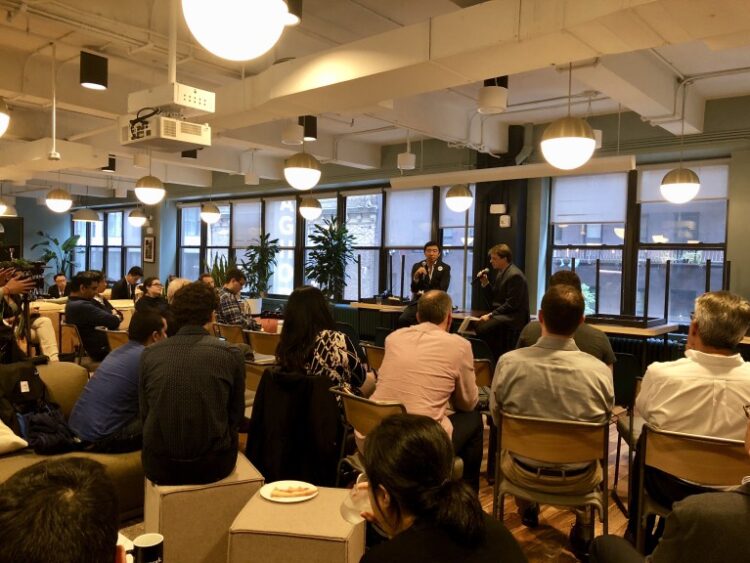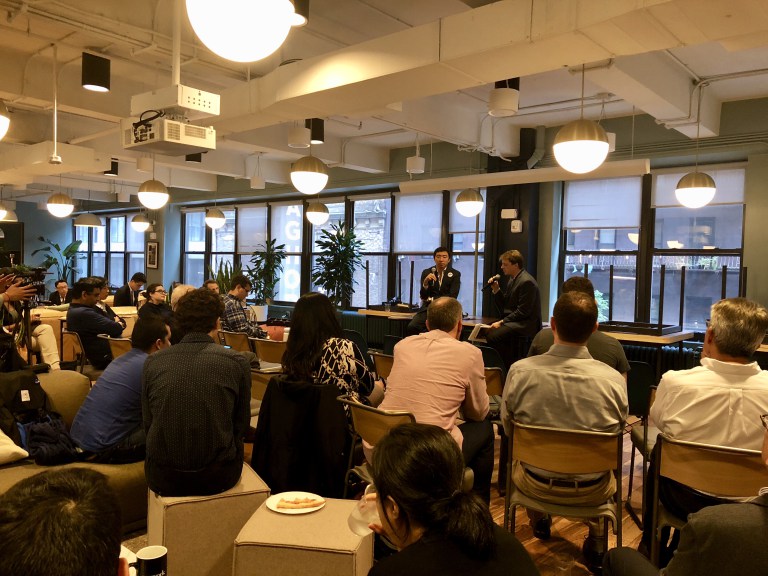Recently, RobotLab hosted its most thought-provoking panel yet, on The Future Of Work and Universal Basic Income. Democratic Presidential Candidate Andrew Yang presented his dystopian outlook on the demise of jobs for “Normal People” caused by the acceleration of automation and artificial intelligence. Yang’s solution, a $1,000 a month for every American, no strings attached. The stipend would come with an opportunity to earn “social credits” measuring a citizen’s ability to give back to society. He cited that in Alaska monthly dividends of $1,500 from oil income are already changing the economic landscape for the USA’s most desolate state. One question left unanswered by Yang was how quickly will the tsunami of monstrous unemployment hit — five, fifteen, or, maybe, twenty-five years?
If past history is any indication of future events, then learning from the proliferation of Internet companies at the end of the twentieth century could be a valuable exercise. In the late 1990s, companies that added ‘.com’ to their branding immediately saw a bump in market valuation. However, when the tech bubble burst shortly following the dawn of the millennium these same companies quickly shuttered. In many ways, the success of today’s e-commerce and mobile giants is built on the graveyard of these badly executed startups. Similarly, the hardware industry, including robotics, has suffered in recent years from hyperbolic excitement for innovations that offer little value, many of these novelties being first promoted on the pages of Kickstarter and Indiegogo which account for more than a billion dollars of new funding.
When analyzing the success of crowd-funding projects, analysts often cite a 2015 study by the University of Pennsylvania that surveyed more than 500,000 online financial backers of Kickstarter projects. According to the report’s author, Professor Ethan Mollick of the Wharton School stated,”Project backers should expect a failure rate of around 1-in-10 projects, and to receive a refund 13% of the time. Since failure can happen to anyone, creators need to consider, and plan for, the ways in which they will work with backers in the event a project fails, keeping lines of communication open and explaining how the money was spent. Ultimately, there does not seem to be a systematic problem associated with failure (or fraud) on Kickstarter, and the vast majority of projects do seem to deliver.” However, Mollick’s research was conducted before such high-profile fraud cases as the $179 million campaign by Star Citizen, the $35 million scam by Lily Drone, the $17 million scam by Elio Motors Scooter, and Coolest Cooler’s $13 million fiasco. While more than half of crowd-funding projects never successfully receive funding, it is surprising how many do and never ship, including a grab-bag of very peculiar projects like underwater breathing tubes, anti-radiation underwear, edible drinking cups, and (my favorite) the ostrich pillow.
In response to the growing number of dissatisfied backers that never receive shipments, both Indiegogo and Kickstarter have partnered with product sourcing firms (e.g., Avnet, Dragon Innovation, and Arrow) to provide fulfillment services to their funded projects. Last month, Julio Terra of Kickstarter explained to Digital Trends, “The reason why we partnered with Avnet and Dragon Innovation is that we wanted to help creators better prepare for manufacturing before they launch a project on Kickstarter,” Terra continued, “What we’ve learned over the years is that project problems are often recognized after a product is funded, and at that point, it’s often too late to solve the problem because it’s an issue that was caused by decisions that were made very early on in the process.”
Three years ago, Jibo was heralded as the Indiegogo success story. Founded by famed MIT researcher Cynthia Breazeal, it successfully raised over $3.5 million in crowdfunding on top of millions from venture capital. Breazeal promised to usher in a new age of social robotics, “The way that the personal robots revolution is going to really happen is by making it a platform. Because once you do that, suddenly you can have a robot that can do many things for you, for many different people, versus these niche robots that only vacuum or only clean your gutter.” In Breazeal’s mind, Jibo was indeed that platform, and recently endorsed by Time Magazine as the best innovation of 2017. However, last week a company spokesperson informed BostInno that the robot pioneer is laying off the majority of its workforce, to enable “additional time to secure additional funding or pursue an exit.” Jibo is sadly running on fumes after burning through more than seventy million dollars in three years.
The first indication of Jibo’s problems was a series of delayed shipments, forcing Indiegogo a year ago to offer full refunds for unfulfilled orders. This past September, Jibo started shipping its first units. However, the product reviews were less than stellar, and many compared its functionality to Amazon Alexa, which sells for five percent of the cost of a Breazeal’s robot and a greater library of skills.
A year after Breazeal successfully launched her crowdfunding campaign, Amazon unveiled Echo, initially priced at seventy-five percent less than Jibo Almost simultaneously the e-commerce behemoth announced “The Alexa Fund,” a $100 million investment vehicle “to fuel voice technology innovation for developers, device-makers, and companies.” Instead of pivoting in 2015 to meet the new demands of the changing landscape, which eventually became more competitive with Apple and Google joining the fray, Jibo’s Indiegogo commitments became an albatross over the company. In the end, the robot that eventually shipped for close to $1,000 was merchandised next to a series of more functional machines priced under $100.
In contrast to Jibo, Intuition Robotics will begin commercially marketing its geriatric home companion, the ElliQ robot, later this year. Rather than following the Indiegogo route, the Israeli company implemented beta trials with seniors in Florida and California. Unlike Breazeal’s one-size-fits-all approach, Dor Skuler built his company in 2015 to fill a specific market need – aging baby boomers. As Skuler explains, “Our mission with ElliQ is to harness the proactive power of cognitive computing to empower older adults to overcome the digital divide and pursue an active lifestyle.” Social robotics is forecasted to expand to more than half a billion dollars by 2023, driven largely by the growing demands of the “aging-in-place” market expected to reach 98 million people in the USA by 2060. To better compete against Amazon, Google, and Apple, Skuler hired his own internal gerontologist, Keren Etkin, who “questioned them [Intuition] to find out what’s missing from current technologies that prevent them [seniors] from using them [Alexa et al].”
While Jibo languishes, Skuler’s approach proves that the future of robotics, and possibly the world, will be written by innovators carving out their own market niche against the backdrop of a very competitive economy. Survival will no longer depend on just money, but creativity. In the words of Presidential Candidate Yang, “I know the country my sons will grow up in is going to be very different than the one I grew up in, and I want to look back at my life knowing I did everything in my power to create the kind of future our children deserve—an America of opportunity, freedom, equality, and abundance.”




